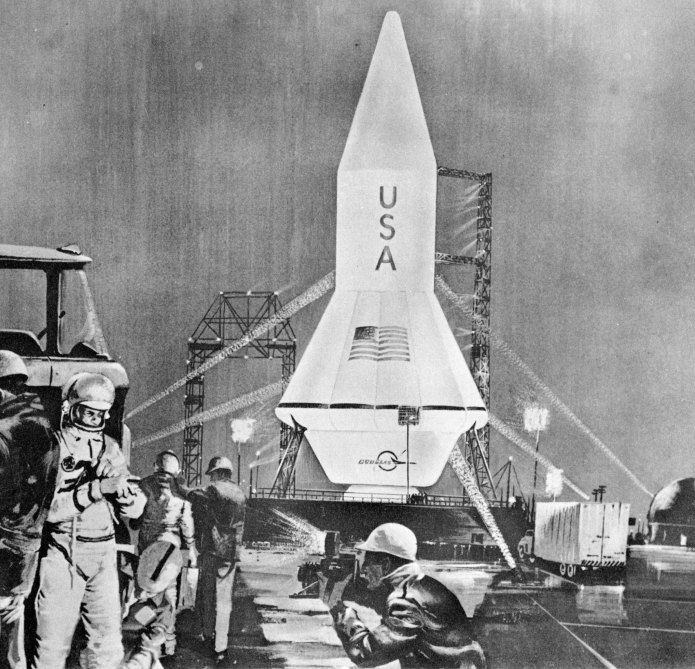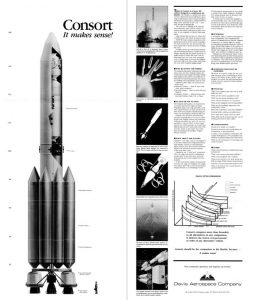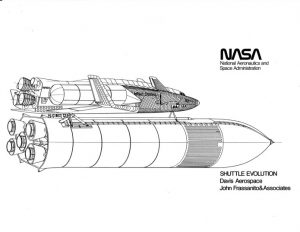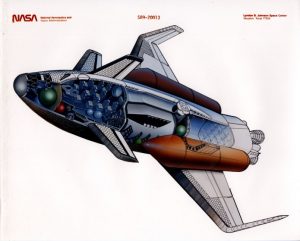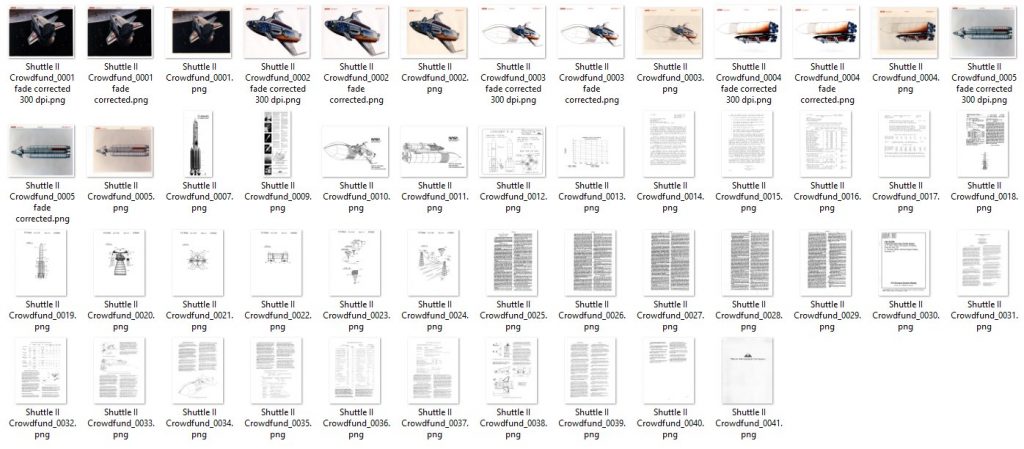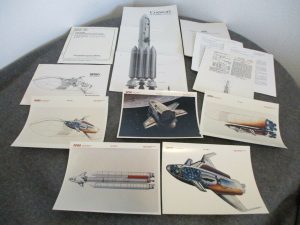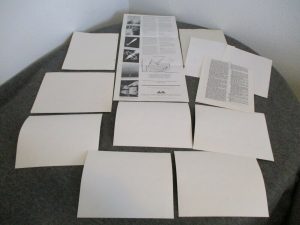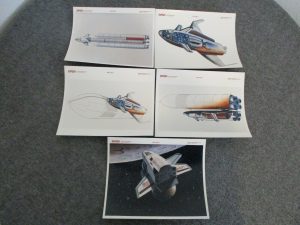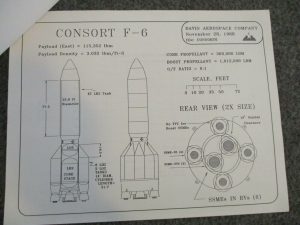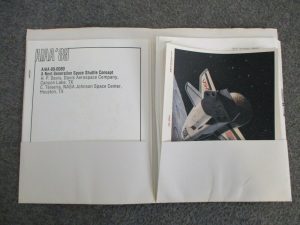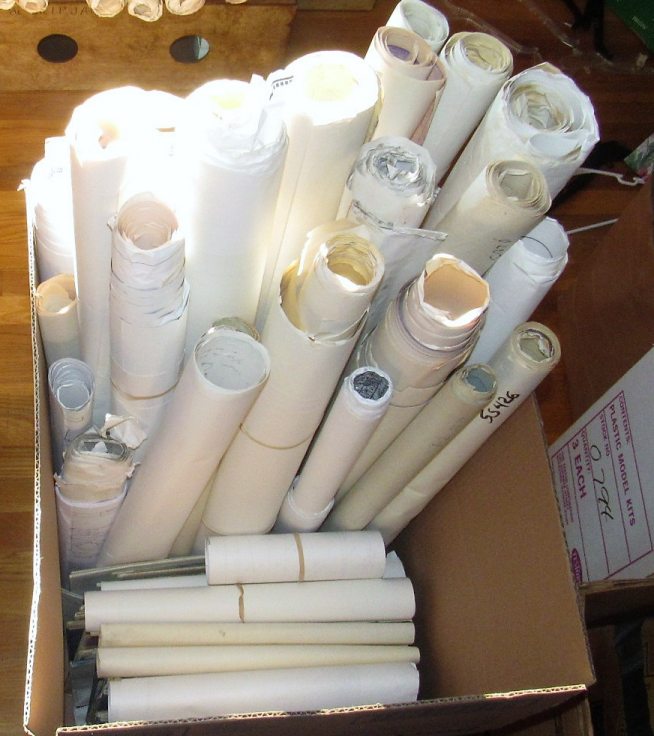An early/mid 1960’s NASA film about the design of the Apollo hardware. Includes simple schematics of both Direct mission hardware as well as Lunar Orbit Rendezvous hardware; also visible are more detailed diagrams of Apollo and Apollo-derived designs.
A Douglas concept from 1963 for a large space booster that was to use both chemical and nuclear engines. The first stage was to have chemical engines; when the booster reached sufficient altitude, it would stage off and a purely nuclear stage would deliver a one million pound payload to low Earth orbit (in this case, a million pounds of liquid hydrogen for a large interplanetary spacecraft). both stages would be recovered for re-use.
*Somewhere* I have a paper that describes this at least a little bit, with a minimal diagram…
I see your “modern art” and raise you…
New album just dropped at Starbase pic.twitter.com/3GACK66k9f
— Cosmic Perspective (@considercosmos) February 20, 2022
Family pic 👨👩👦👦 pic.twitter.com/qK5UTLiKt2
— Cosmic Perspective (@considercosmos) February 20, 2022
Art art art art art art art art art art art art art art art art art art art art art art art art art art art art art art art art art art art art art art art art art art art art art art art art art art art art art art art art art art art art art art art art art art art art art art art art art art art art art art art art art art art art art art art art art art art art art art art art art art art art art art art art art art art art art art art art art art art art art art art art art art art art art art art art art art art art art art art art art art art art art art art art art art art art art art art art art art art art art art art art art art art art art art art art art art art art art art art art art art art art art art art art art art art art art art art art art art art art art art art art art art art art art art art art art art art art art art art art art art art art art art art art art art art art art art art art art art art art art art art art art art art art art art art art art art art art art art art art art art art art art art art art art art art art art art art art art art art art art art art art art art art art art art art art art art art art art art art art art art art art art art art art art art art art art art art art art art art art art art art art art art art art art art art art art art art art art art art art art art art art art art art art art art art art art art art art art art art art art art art art art art art art art art art art art art art art art art art art art art art art art art art art art art art art art art art art art art art art art art art art art art art art art art art art art art art art art art art art art art art art art art art art art art art art art art art art art art art. Art.
In March of 1961, “Space World” magazine published a few articles about what the future would look like thanks to the onrushing new technologies of the space age. It is… well, it’s wrong.
The article is jam-packed with predictions of a glorious technological and economic future to be brought about by the Space Age. And from the standpoint of 1961, it probably made sense: technology was advancing by leaps and bounds, the budget for NASA was beginning to explode, overall space and related science spending by both government and industry were shooting upwards. It *should* have been a glorious new age. But the experts did not count on a few things. Viet Nam, for example and, worse, LBJs “Great Society” economic and social suppression/dystopia promotion programs.
Some of the predictions for 1971:
1) The “Space Industry” would be the biggest industry in America
2) The “middle class” would be working high-paying skilled jobs and would make up 80% of the population
3) Skyscrapers would dwarf the Empire State Building, using girders made from beryllium, tantalum and niobium
4) Tape recorders would be the size of a cigarette
5) You could easily send a fax from, say, New York to Australia. You’d scan the page, beam it up to a satellite passing overhead, the satellite would store the scan and, when it some time later passed over Australia, the fax would be beamed down. That’s… not how international satellite communications works, but OK.
6) There’d be cities in Antarctica
7) There’d be regular, routine and affordable suborbital rocket passenger transport. Such as from Antarctica to New York, several flights a day.
Amusingly, these predictions are considered likely to be too conservative; people would look back to the predictions and “wonder why the prophets of 1961 were so shortsighted.”
“Today it is rocket time, and the coming decade will carry us all into the Age of Astronautics.”
They could not have known that their glorious future would only last a small handful of years. By 1968, the Apollo program was already terminated, with no follow-on. And the maximum spending for NASA occurred only in 65-66 or so, peaking at about 4% of the federal budget. Imagine if the upward trend had continued to, say, 1970. Perhaps 6, maybe 8% of the federal budget. What a world it could have been.

Awww. I gave myself a sad.
Sigh.
The full-rez scan of the article has been uploaded to the 2022-02 APR Extras folder on Dropbox. This is available to all $4 and up Patrons and Subscribers. If you would like to help fund the acquisition and preservation of such things, along with getting high quality scans for yourself, please consider signing on either for the APR Patreon or the APR Monthly Historical Documents Program.
Elon Musk gives an hour-twenty update on Starship. Claims confidence of an orbital launch sometime in 2022.
The package of Shuttle II stuff (actually, “Shuttle Evolved”) arrived today and has been scanned and uploaded to Dropbox (some 350 megabytes). Enough funders came on board to drop the per-funder price to a mere $13. The artwork was particularly nice; it was scanned in at 600 dpi and provided both as-scanned, and with some process to de-age and brighten the art. The documents have been turned into PDFs, as well as providing the raw scans.
The collection of stuff was expensive, but crowdfunding it made it inexpensive for everyone. If you see anything on ebay or elsewhere that might benefit from such an approach, don’t hesitate to point it out.

Funders who have paid the $13 should have received a Dropbox notification about the uploads providing access to the files.
So a lot of “Shuttle II” stuff appeared on eBay for an exorbitant price. I’m becoming increasingly leery of plunking down excessive sums for this sort of thing… not only due to my own finances and the onrushing economic meltdown, but because doing so incentivizes sellers to slap even more exorbitant prices on things. But, I put this lot before my APR patrons/subscribers as a potential crowdfunding opportunity, and enough signed on that I went ahead and purchased the lot. It should arrive early next week.
As with all my APR crowdfunds, the cost of the item is split evenly among the funders; the more funders, the lower the price per person. Each funder will receive a complete set of high-rez (300 DPI, full color… higher rez if called for) scans of the items. Typically these crowdfunded items then get sent on to appropriate archive, library or museum, though this time I’m not quite sure where they should go.
If you would be interested in signing on, send me an email ![]() . There are currently enough funders that the per-funder price is
. There are currently enough funders that the per-funder price is ~$24 under $14; the more sign on, the lower it’ll get. If you have a price limit noticeably lower than $14, let me know in your email. This will remain open until the stuff arrives, presumably early next week. At that point it’ll be closed and the price set.
Additionally: the box shown below, loaded with blueprints/diagrams, is somewhere in the system headed my way. It was procured sight unseen; I have high hopes. This sort of thing is made possible by the APR Patrons/Monthly Historical Documents Program subscribers. If you want to help preserve aerospace history and get in on these goodies, please consider subscribing.
Fantastic Plastic has at last released for purchase the War Rocket model I CADded for them a few years ago:
Emperor’s War Rocket
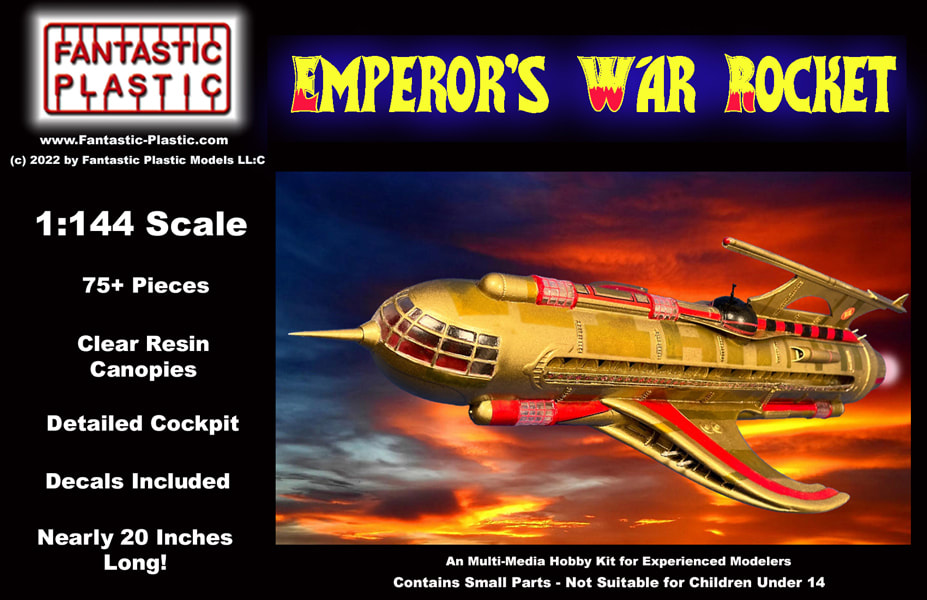

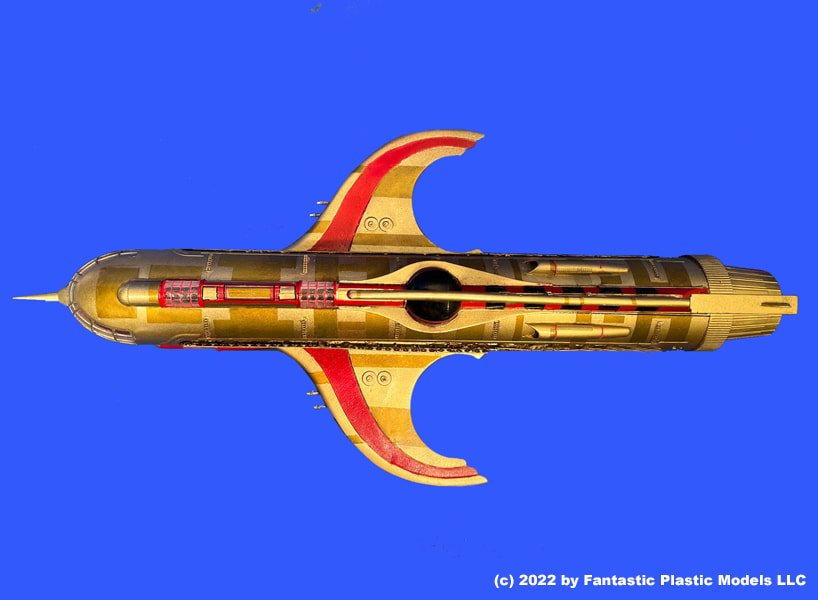
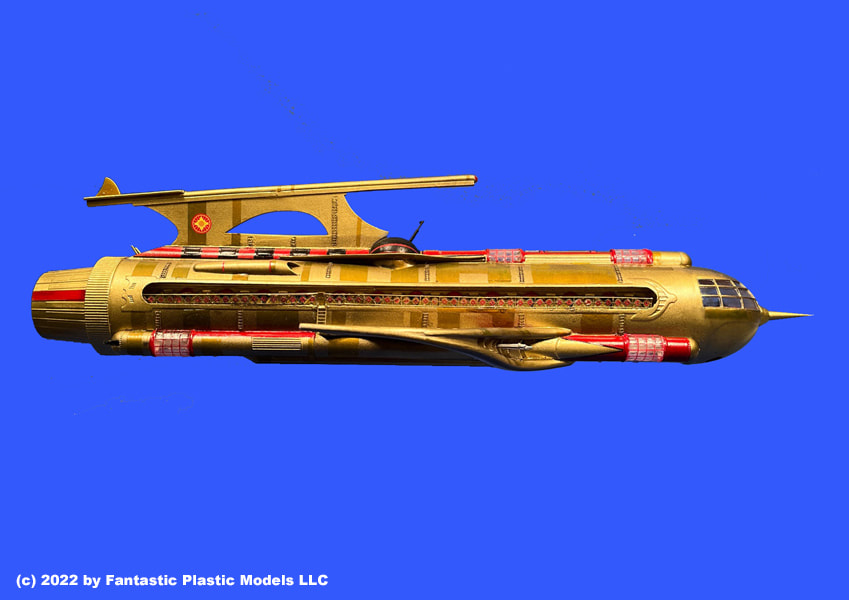
The question, of course, is “what happens to flesh when you stick it behind a rocket engine?”
A new-ish rocket company… that already has $400 million in investment.
